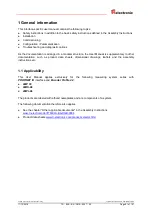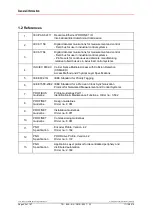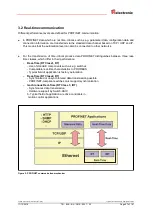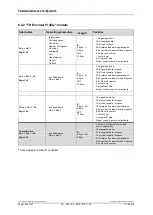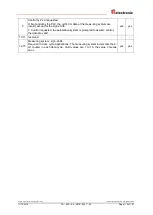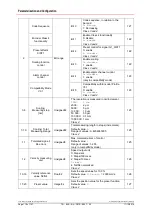
Printed in the Federal Republic of Germany
TR-Electronic GmbH 2018, All Rights Reserved
11/12/2019
TR - ELA - BA - DGB - 0027 - 03
Page 105 of 167
6 Parameterization and Configuration
Parameterization
Parameterization means providing a PROFINET IO device with certain information required for
operation prior to commencing the cyclic exchange of process data. The measuring system requires
e.g. data for resolution, code sequence etc..
Normally the configuration program provides an input box for the PROFINET IO controller with which
the user can enter parameter data or select from a list. The structure of the input box is stored in the
device master file. The number and type of parameters entered by the user depend on the choice of
configuration.
Configuration
Configuration means specifying the length and type of process data and how these are to be treated.
The configuration program usually provides a graphic interface in which the configuration is entered
automatically. All you need to do then is specify the desired I/O address for this configuration.
The measuring system requires a different number of input and output words on the PROFINET,
depending on the desired configuration.
6.1 Modular structure
As not all functions of the measuring system are used all the time, individual functions can be hidden
on the bus.
For this purpose the measuring system is represented as a modular device in the interface of the
configuration software of the PROFINET master.
This means that after inserting the measuring system into the configuration list of the master, the
relevant configuration list is empty initially and the desired module
●
PNO Encoder Profile
(Subslot 2: min./max. 1 of 4 submodules configurable)
– Submodule: Standard Telegram 81
– Submodule: Standard Telegram 82
– Submodule: Standard Telegram 83
– Submodule: Standard Telegram 84
– Submodule: Position 32 Bit
(optionally in Subslot 3 for Shared Device applications)
or
●
TR Encoder Profile
(Subslot 2: min./max. 1 of 30 submodules configurable)
– Submodule: Pos. + Vel. 1
– Submodule: Pos. + Vel. 1 –
. . .
– Submodule: Pos. + Vel. 1 – 30
– Submodule: Shared Device Pos. + Vel. 1 – 30
(optionally in Subslot 3 for Shared Device applications)
or desired submodules must be entered depending on the application.

